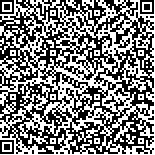|
| 引用本文: | 徐丽君,徐大伟,辛晓平.中国羊草适宜性区划与种植现状分析[J].中国农业资源与区划,2016,37(10):174~180 |
| |
|
| |
|
|
| 本文已被:浏览 3060次 下载 887次 |

码上扫一扫! |
|
|
| 中国羊草适宜性区划与种植现状分析 |
|
徐丽君, 徐大伟, 辛晓平
|
|
呼伦贝尔国家野外站/中国农业科学院农业资源与农业区划研究所,北京 100081
|
|
| 摘要: |
| 草种栽培区划是农牧业发展的必然趋势,通过实行草种区划,不但可以充分发掘利用现有的优良牧草和饲料作物资源,还可以避免有些地区引种筛选的重复劳动和盲目的国外引种的失败。文章以我国主要的优良牧草—羊草为研究对象,开展羊草在我国适宜性区划与种植现状的研究。适宜性区划是基于自然要素的生态适宜性模型,结合牧草生物学特性,综合考虑各因子进行系统分析,同时联系牧草实际生产情况完成,种植现状通过统计数据获得。研究结果明确了羊草在全国生态范围内适宜性的分布区域,提出了我国主要栽培牧草生态适宜区、次适宜区、不适宜区,其中适宜区主要分布在东北区中北部,内蒙古区中东部,黄土高原区部分区域、华北区北端。次适宜区主要分布在东北区中部、内蒙古区北部及中部、华北区中部。根据近10年的统计数据,对羊草在我国的种植现状有了一个初步了解,截止2011年,我国羊草种植面积达66.37万hm2。研究结果理论上科学,模拟结果上准确。 |
| 关键词: 牧草 羊草 适宜性 区划 种植现状 |
| DOI:10.7621/cjarrp.1005-9121.20161030 |
| 分类号: |
| 基金项目: |
|
| LEYMUS CHINENSIS SUITABILITY REGIONALIZATION AND PLANTING STATUS |
|
Xu Lijun, Xu Dawei, Xin Xiaoping
|
|
Hulunber Grassland Ecosystem Observation and Research Station/Institute of Agricultural Resources and Regional Planning of Chinese Academy of Agricultural Sciences, Beijing 100081, China
|
| Abstract: |
| Grass cultivation division is the inevitable trend of the development of agriculture and animal husbandry, the introduction of species division can not only fully explore the existing excellent forage grass and fodder crops resources utilization, but also avoid the failure and blind introduction of screening introduction in some areas. Leymuschinensis(L. chinensis) is one of the mainly fine forage in north of China. The suitability regionalization and the planting situation of L. chinensis were studied. The suitability regionalization was based on the natural elements ecological suitability model, forage biological characteristics including yield, the actual production of pasture analyzed various factors, these factors including temperature, precipitation, soil pH, pasture distribution, yield and so on. The planting area was collected from the statistical data. The results indicated that the national ecological suitable distribution area of L. chinensis, and inferred the suitable area, secondary suitable area and unsuitable areas. The suitable areas are mainly distributed in the central and northern of Northeast area(including Heilongjiang province, east and west of Jilin province, west of Liaoning province), the central and eastern of Inner Mongolia(including south of Hulunbere city, Xilinguole city, Wulanchabu city, Baotou city and east of Erodes city), part area of Loess Plateau(the central and northern of Shanxi province, northwest of Shanxi province, parts of Gansu province and Ningxia province), Northern of North China( including Chengde and Zhangjiakou city, Hebei province). Secondary suitable area including the central of Northeast area (Central of Jilin province and part of Liaoning province), the central and northern of Inner Mongolia(eastern of Hulunbere city, central and west of Xilinguole city, Wulanchabu city, Baotou city and Bayannaoer city), part area of Loess Plateau(including parts of Xinjiang province), central of North China(central and southern of Shanxi province, eastern of Shanxi province, parts of Gansu province). Based on 10-yr statistical data, we obtain the planting status, till to 2012, the planting area of L. chinensis arrive to 6.64 105 hm2. Results are theoretical science, and simulation results are accurate. |
| Key words: forage alfalfa suitability regionalization planting |
|
|
|
|
|
|

